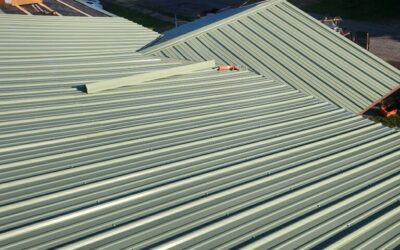The Benefits and Drawbacks of Single-Ply Roofing
Single-ply roofing systems have become increasingly popular in both commercial and residential construction due to their cost-effectiveness, ease of installation, and energy efficiency. However, like any roofing system, they come with their own set of advantages and disadvantages. This comprehensive guide explores the benefits and drawbacks of single-ply roofing to help you determine if it’s the right choice for your building.
What Is Single-Ply Roofing?
Single-ply roofing refers to a roofing system that uses a single layer of membrane material to protect the building. These membranes are typically made from synthetic polymers and are installed in large sheets, either fully adhered, mechanically fastened, or ballasted. The most common types of single-ply membranes include:
- EPDM (Ethylene Propylene Diene Monomer): A synthetic rubber membrane known for its durability and resistance to UV radiation.
- TPO (Thermoplastic Olefin): A thermoplastic membrane that offers excellent energy efficiency and resistance to UV rays.
- PVC (Polyvinyl Chloride): A thermoplastic membrane known for its chemical resistance and durability.
Benefits of Single-Ply Roofing
1. Ease of Installation
Single-ply membranes are lightweight and come in large rolls, making them easier and faster to install compared to traditional roofing systems. This can result in reduced labor costs and shorter project timeline
2. Energy Efficiency
Many single-ply membranes, especially TPO and PVC, are white or light-colored, reflecting sunlight and reducing heat absorption. This reflective property can lead to lower cooling costs during hot months.
3. Durability
When properly installed and maintained, single-ply roofing systems can last 20-30 years. EPDM membranes are particularly known for their resistance to UV radiation and ozone exposure.
4. Flexibility
The flexibility of single-ply membranes allows them to accommodate building movements and thermal expansion and contraction without compromising the roof’s integrity.
5. Chemical Resistance
PVC membranes offer excellent resistance to chemicals, making them suitable for buildings where chemical exposure is a concern, such as factories or restaurants.
6. Low Maintenance
Single-ply roofing systems require minimal maintenance. Regular inspections and prompt repairs can help extend the roof’s lifespan.
Drawbacks of Single-Ply Roofing
1. Vulnerability to Punctures
Due to their relatively thin nature, single-ply membranes can be susceptible to punctures from foot traffic, dropped tools, or sharp debris. Protective walkways and regular inspections can mitigate this risk
2. Seam Integrity
The seams between membrane sheets can be potential weak points. Improper installation or aging can lead to seam failures and water infiltration.
3. Limited Aesthetic Options
Single-ply membranes are typically available in white, gray, or black, which may not suit all architectural styles or aesthetic preferences.
4. Installation Sensitivity
The performance of single-ply roofing systems heavily depends on proper installation. Hiring experienced and certified contractors is crucial to ensure the roof’s longevity and effectiveness.
5. Shorter Lifespan in Harsh Conditions
In areas with extreme weather conditions, such as frequent hailstorms or high winds, single-ply membranes may have a shorter lifespan compared to more robust roofing systems.
Conclusion
Single-ply roofing systems offer a range of benefits, including ease of installation, energy efficiency, and durability. However, they also come with certain drawbacks, such as vulnerability to punctures and seam integrity issues. Careful consideration of your building’s specific needs, climate, and budget is essential when deciding if single-ply roofing is the right choice. Consulting with experienced roofing professionals can provide further guidance tailored to your situation.
For a visual overview of single-ply roofing systems, consider watching the following video:
 (440) 307-2060
(440) 307-2060

